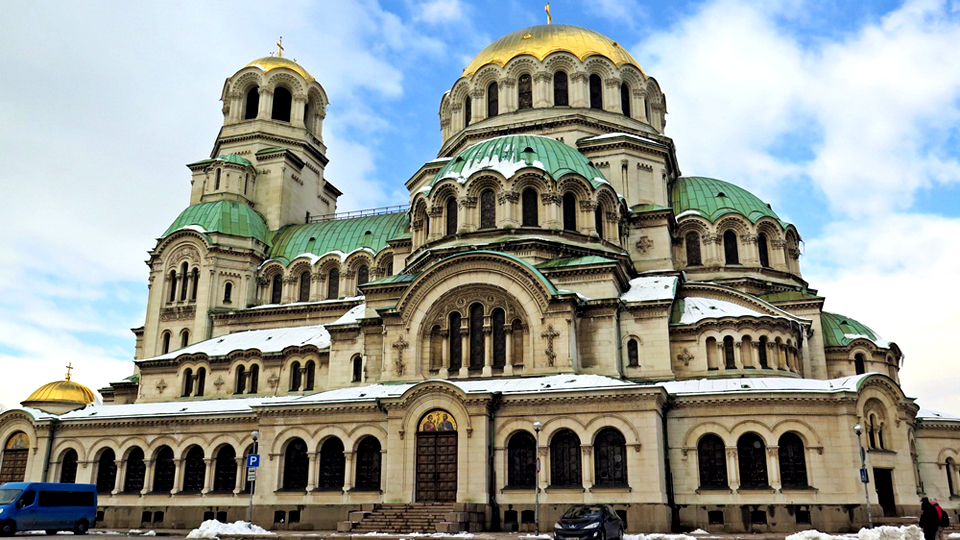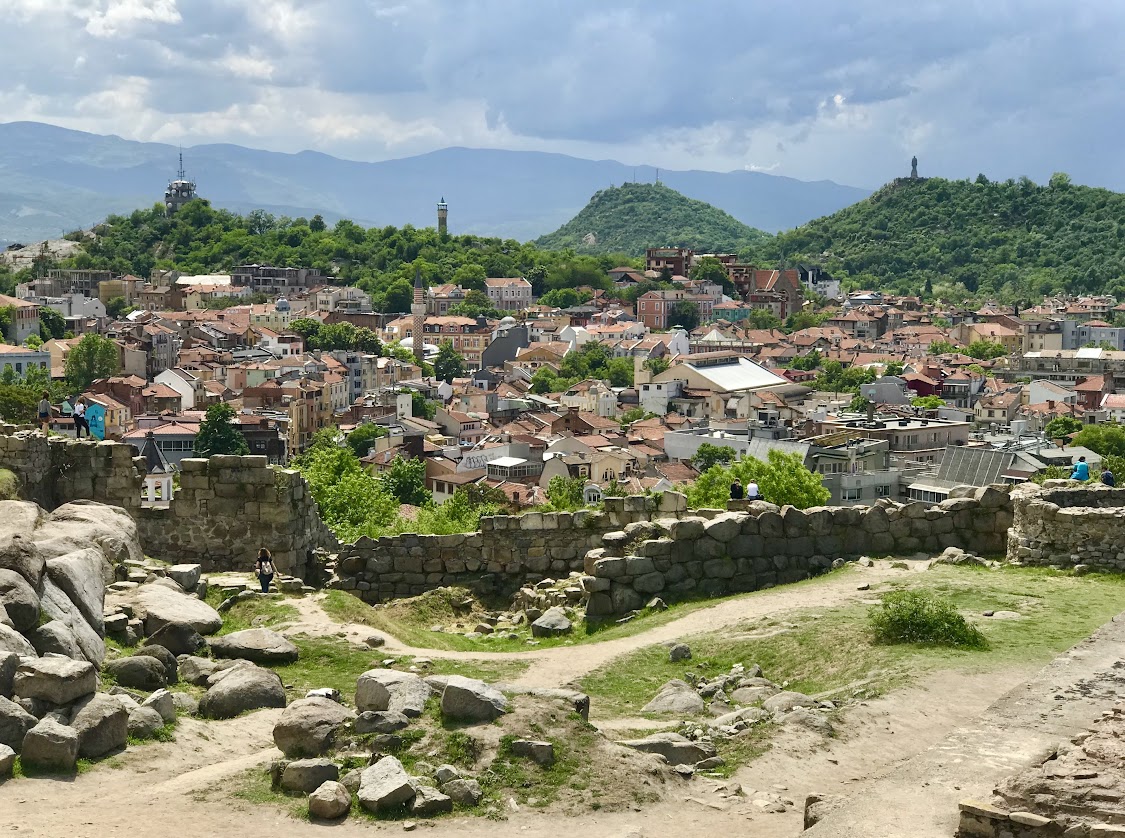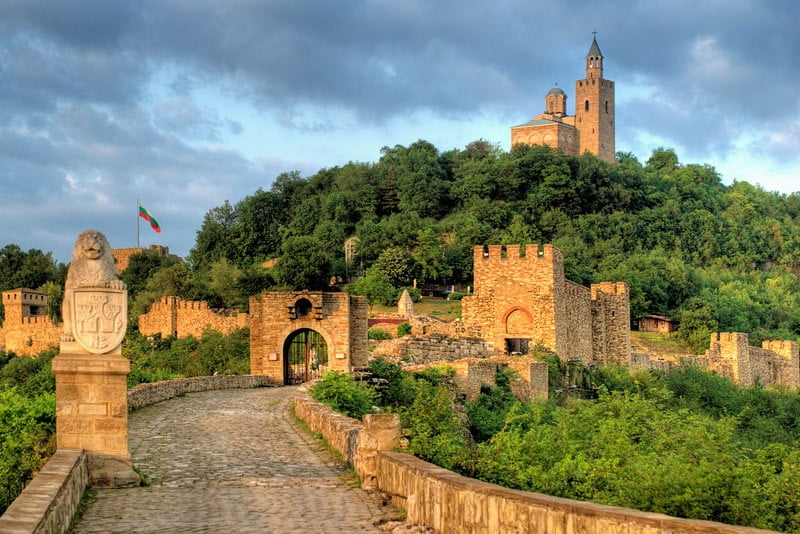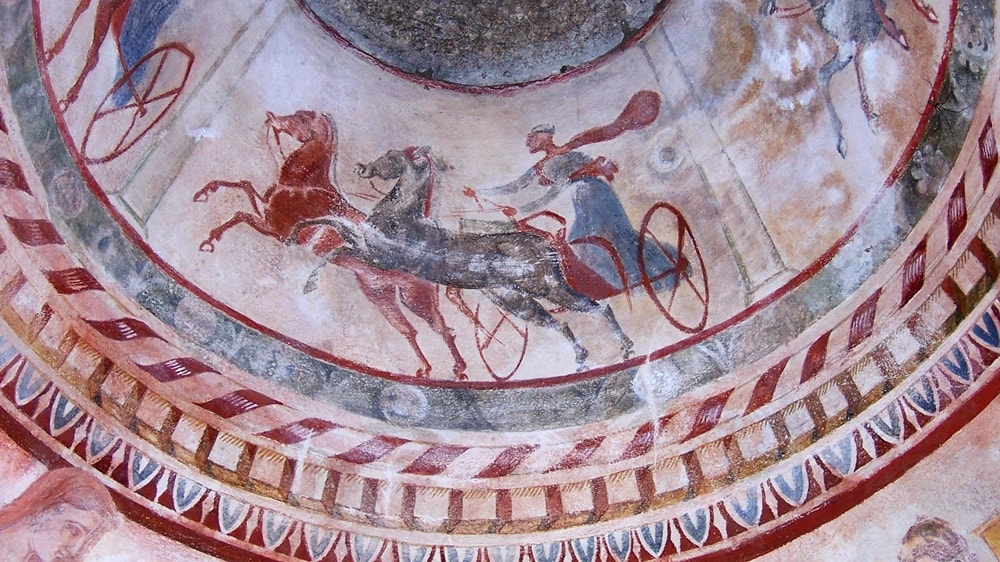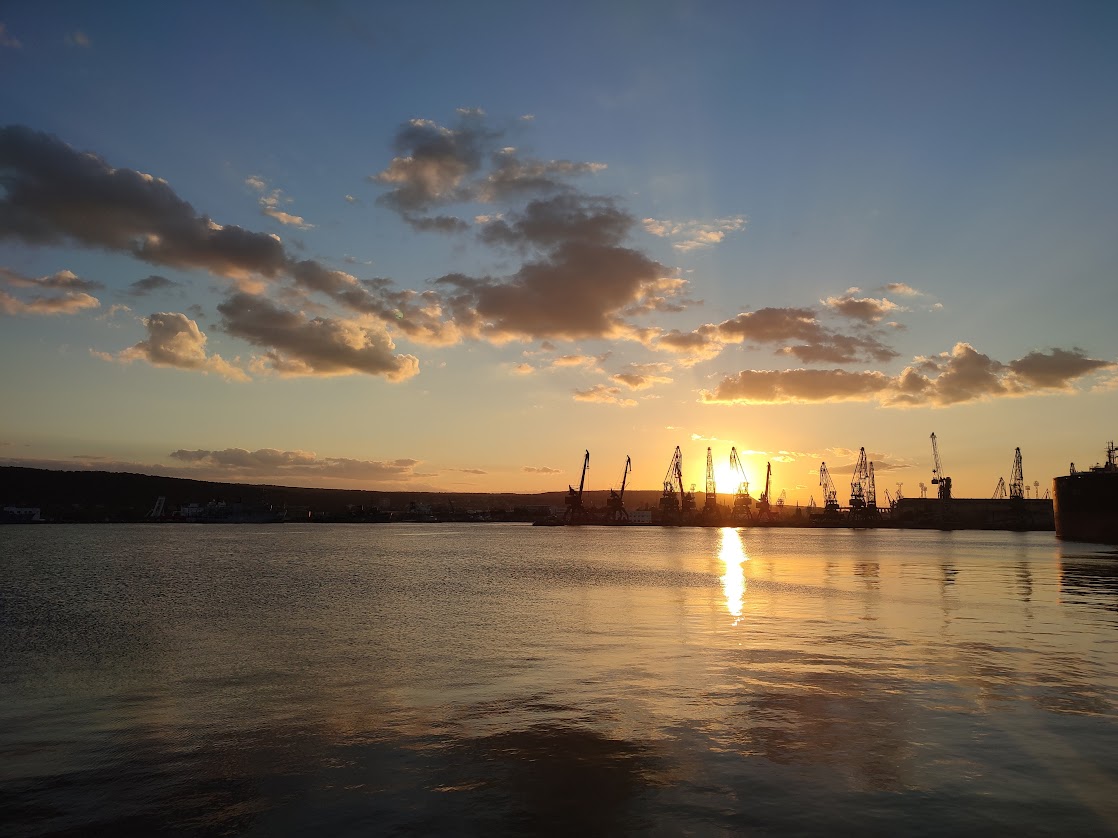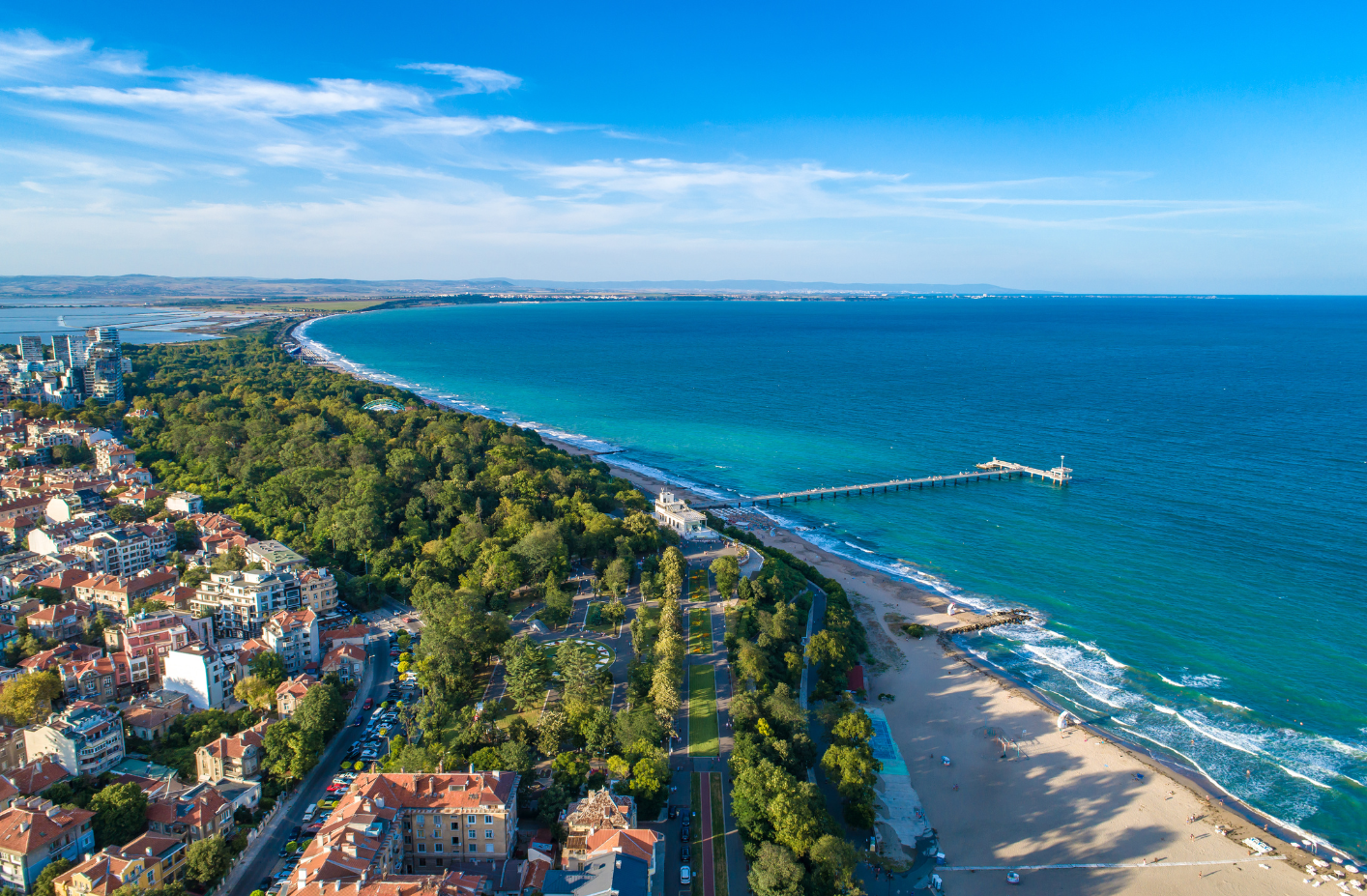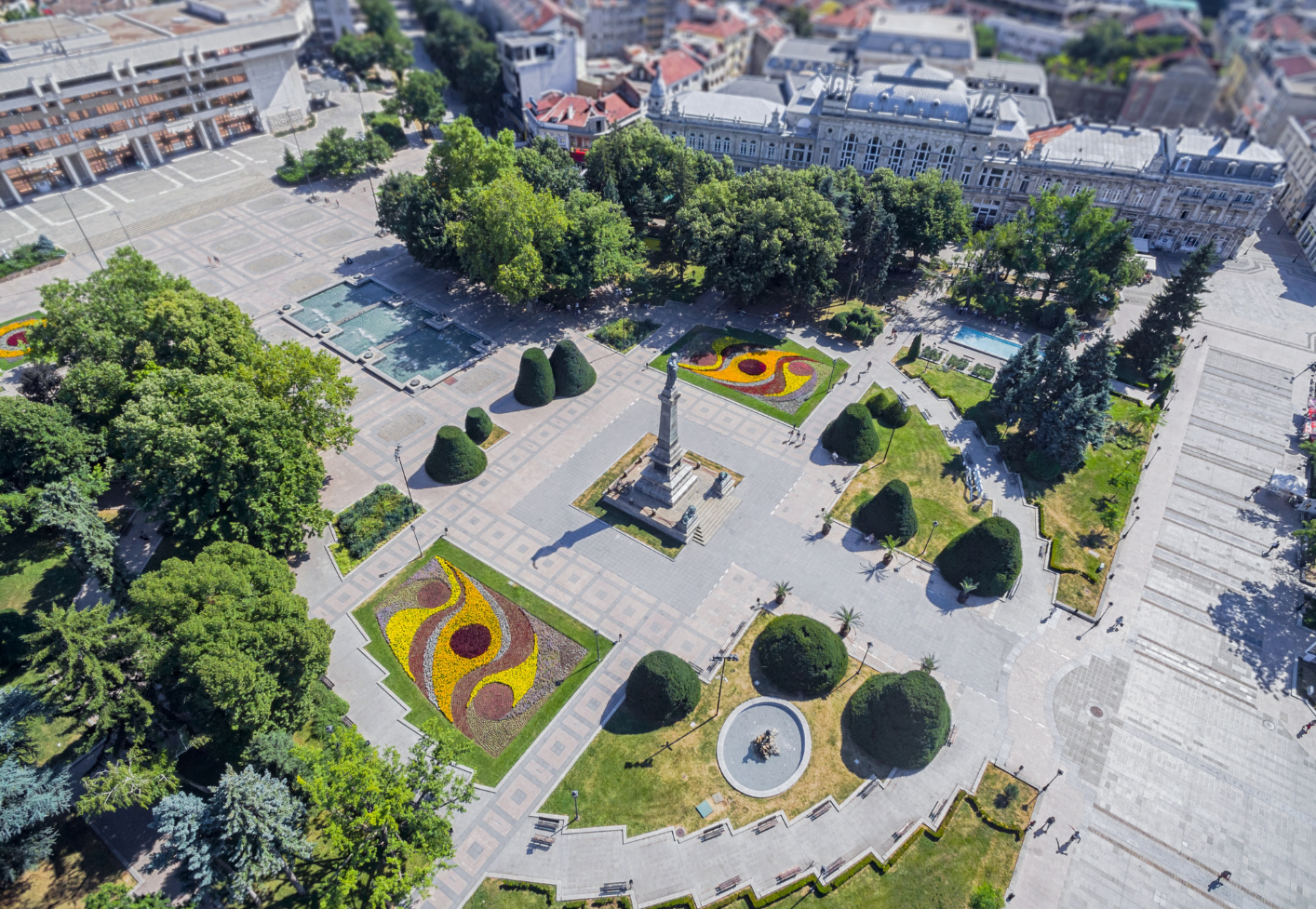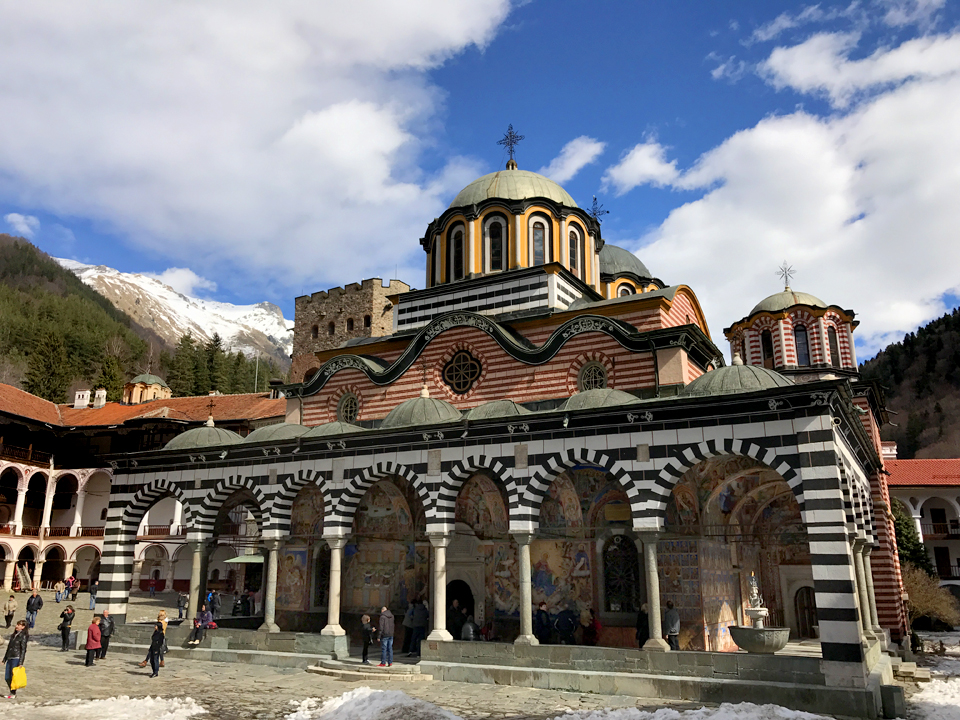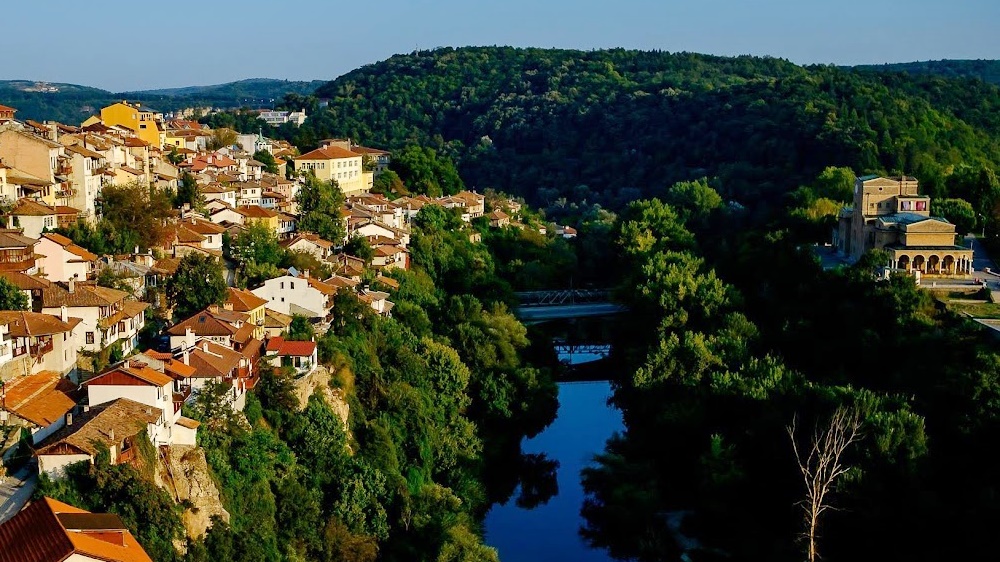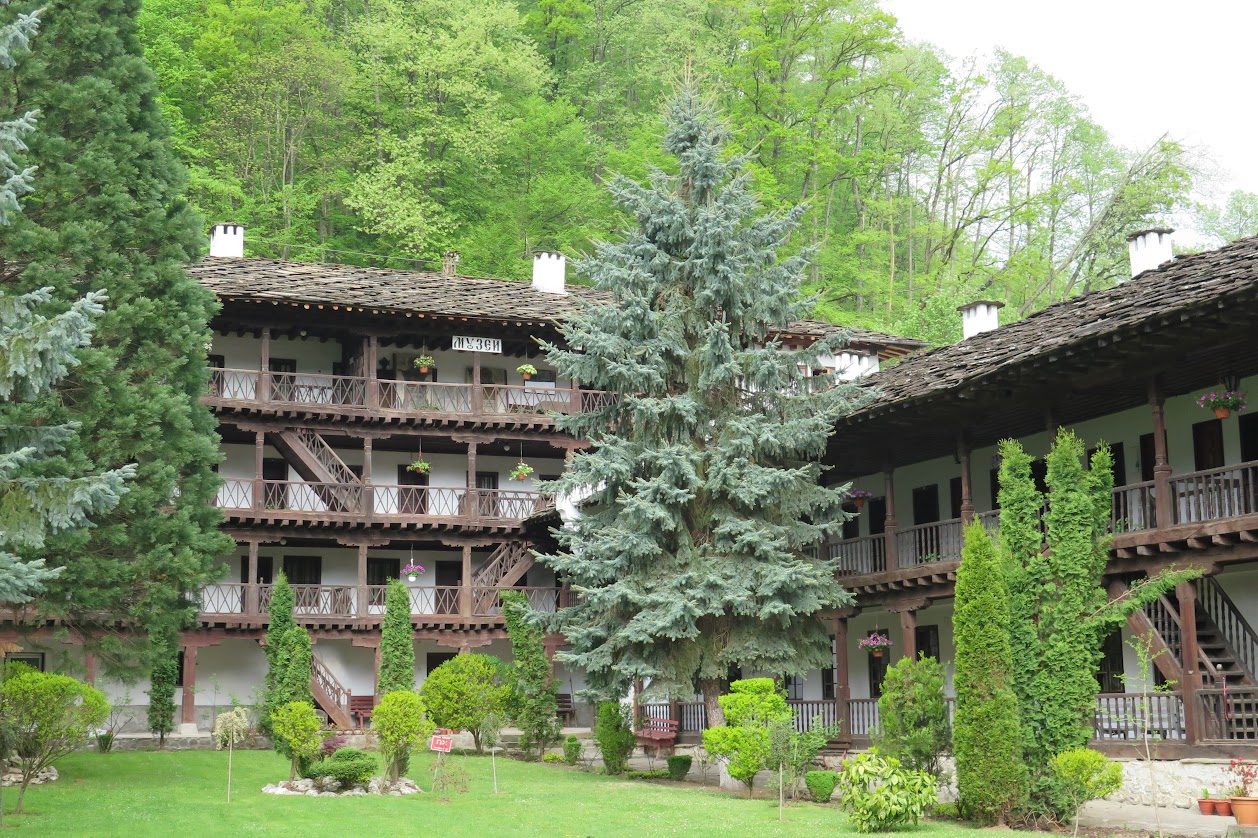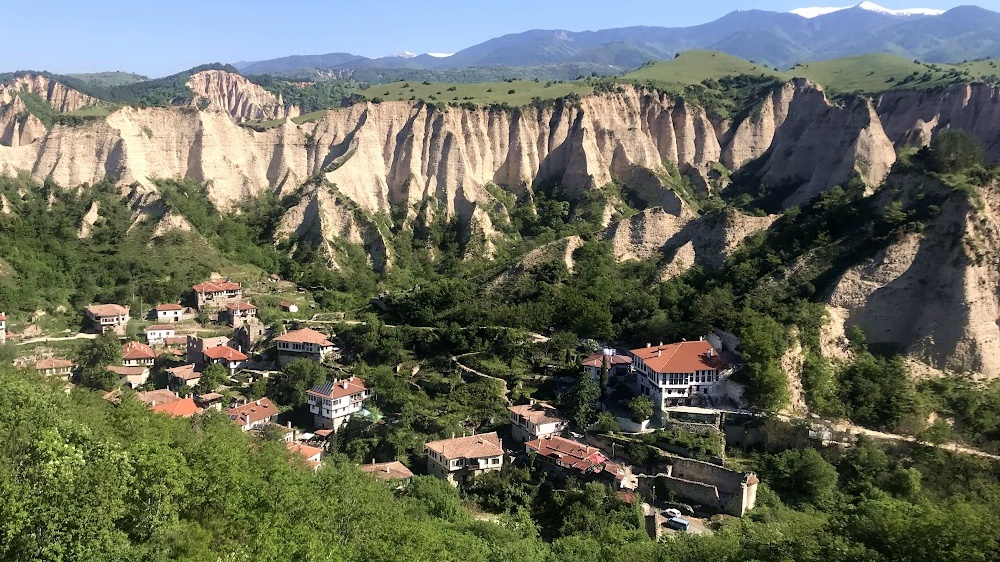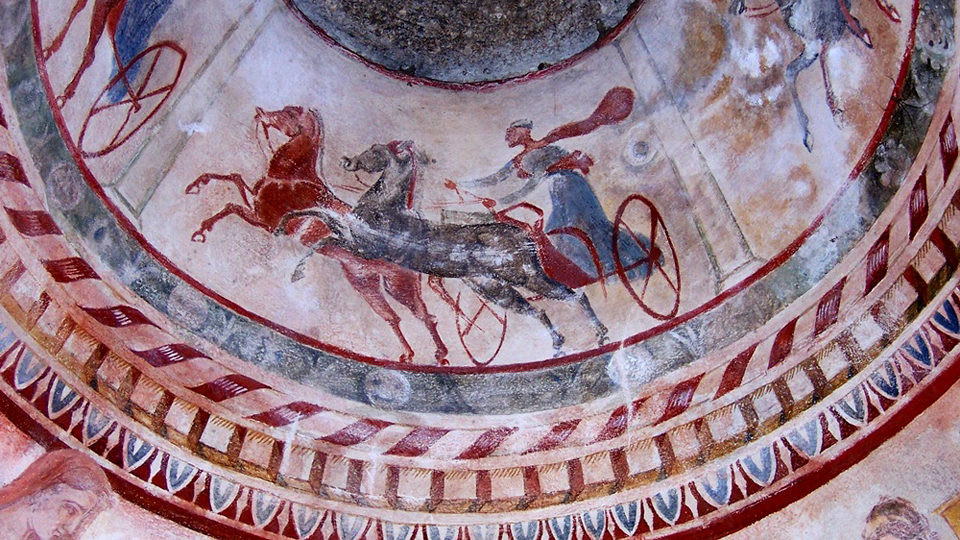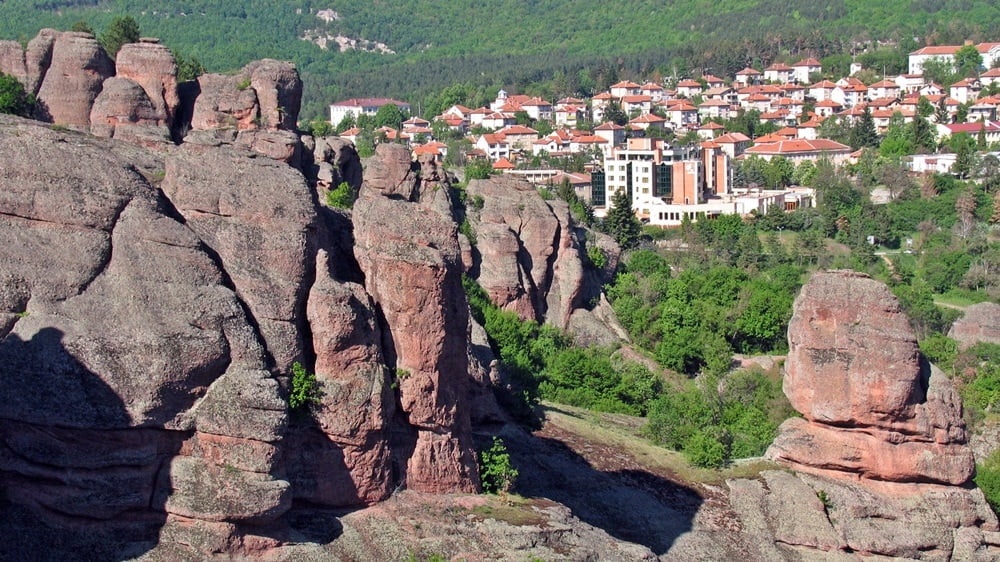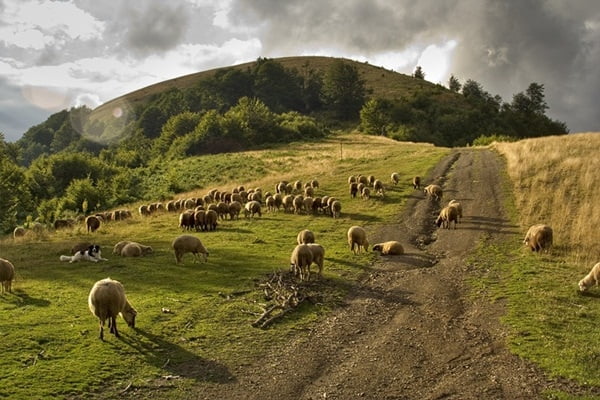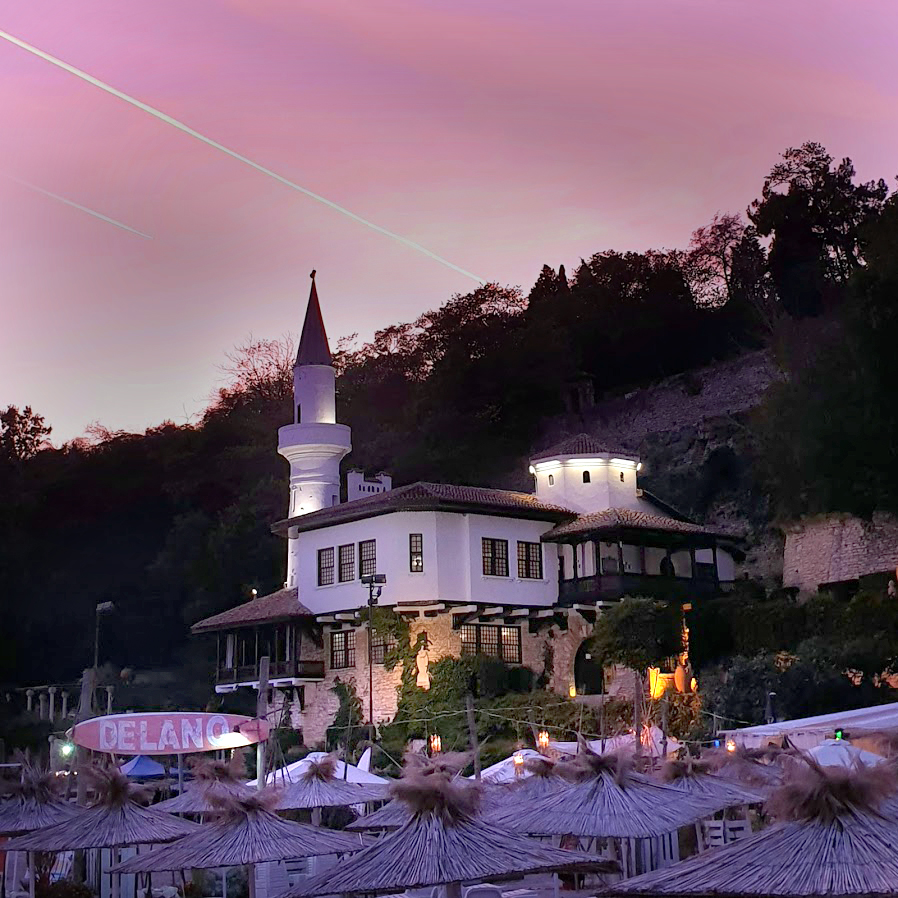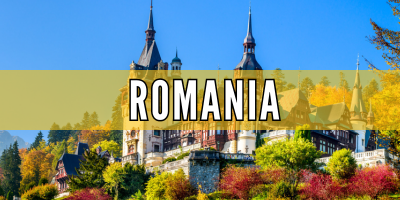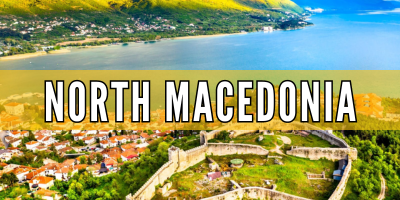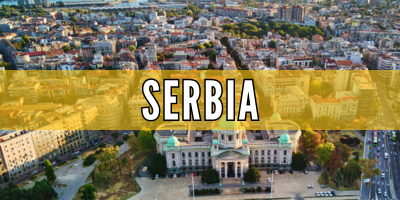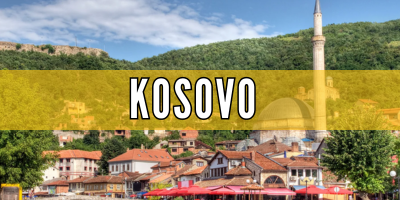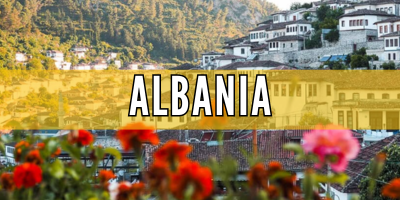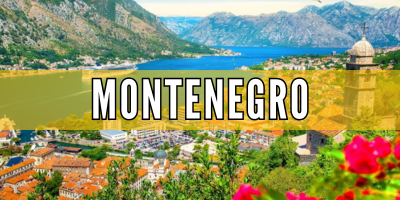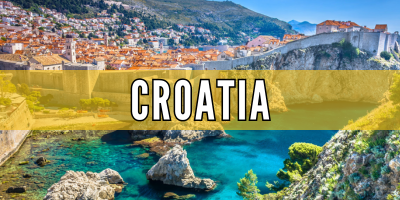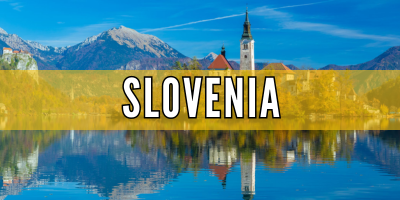Bulgaria – Balkan Tours by Local Guides
Explore One of the Oldest Countries in Europe
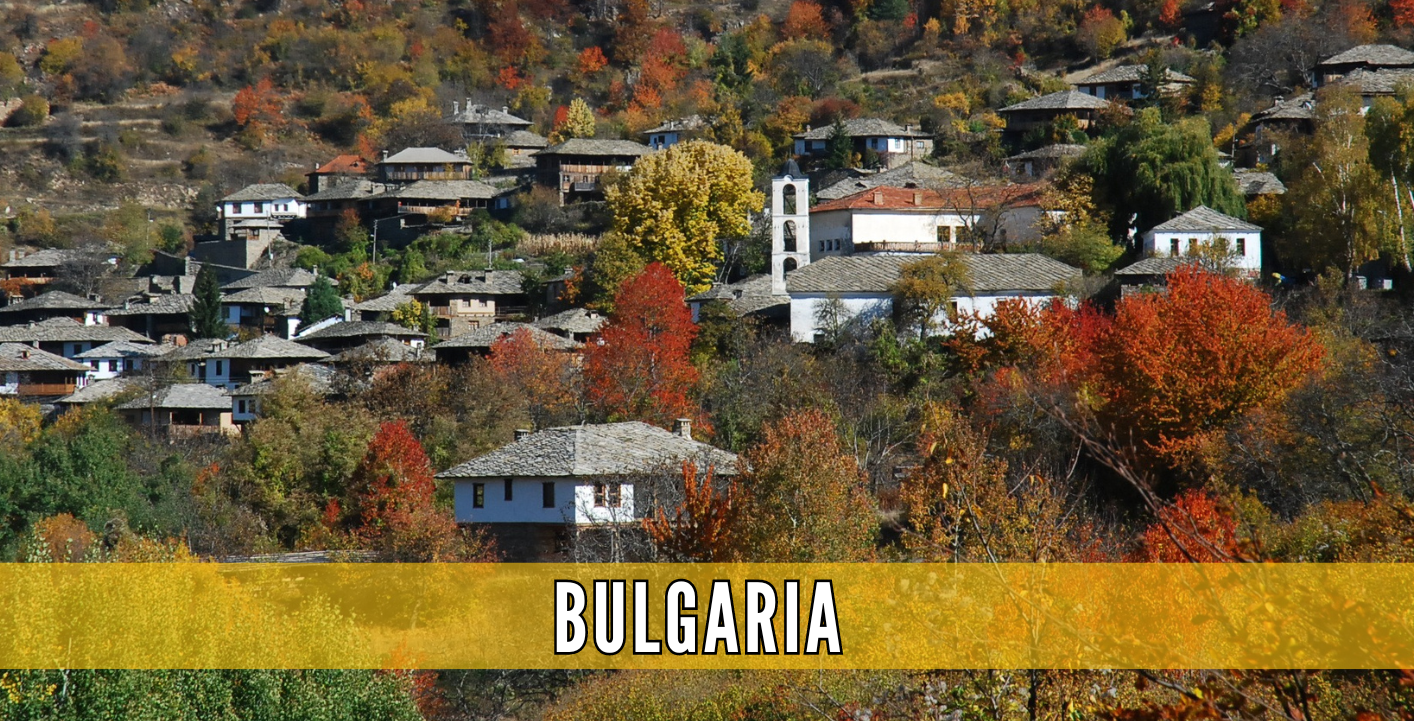
Bulgaria is a fantastic tourist destination due to its natural wonders, rich cultural heritage, long history and hospitable people. Furthermore, it is among the most affordable, tourist-friendly countries in Europe. Let’s dive into Bulgarian culture a bit more and take a look at these basic facts regarding one of the oldest countries in Europe:
Population: 6,447,710
Capital: Sofia
Local Currency: Bulgarian Lev (BGN). Learn more about Bulgaria’s currency →
Visa Requirements: No Visa Needed for U.S. citizens. For other countries, check the Visa policy for the Schengen zone.
Language: Bulgarian
Religion: 71.5% Christianity, 10.8% Islam, 5.2% No Religion
Activities to do: Sightseeing, swimming, sunbathing, skiing, hiking, cooking classes
When to visit: All year round, depending on the activities you wish to do.
You can explore Bulgaria’s many golden beaches, visit UNESCO-protected and historically significant sites and go hiking or camping. If you visit Bulgaria during winter, you can go skiing in one of the four big ski resorts in the country.
When visiting Bulgaria, you can also take part in multiple culinary classes, embark on wine-tasting tours, and visit different festivals to learn about Bulgarian culture and heritage better. So, ask your guide about the possibilities available to you depending on the region you have chosen to explore.
We have no doubt your Bulgarian trip itinerary will be filled with fun activities and great adventures. To give you a taste of what your unique Balkan tour will be like, let’s take the time to review some of the curious facts about this destination:
Curious Facts About Bulgaria
Bulgaria is one of the oldest countries in Europe and is also the only country that has never changed its name since its creation in 681.
Bulgaria is home to the oldest golden treasure in the world. The artefacts originate from 4600-4200. BC!
One of the most significant facts about Bulgaria is that during all battles, the Bulgarian flag was never captured.
The Bulgarian folk song “Izlel e Delyu Haydutin” performed by the Bulgarian folk singer Valya Balkanska was sent as a musical message from Earth to deep space aboard the American space probe – Voyager I.
Bulgarians have their own alphabet – the Cyrillic alphabet, created by Cyril and Methodius.
The Rose Valley in Bulgaria produces a large part of the world’s rose oil, which is a major component of the cosmetic industry.
One of the most popular facts about Bulgarians is that they nod their heads for “no” and shake them for “yes”.
And if that wasn’t enough to get you hooked on visiting Bulgaria, let’s review the main cities, attractions and activities that will be a part of your trip itinerary. We have also prepared a detailed FAQ section, which provides clear answers to some of the most commonly asked questions from travelers. Let’s get on board! Ahoy!

Balkan Tours Including Bulgaria:
Romania – Bulgaria
Romania – Bulgaria – North Macedonia – Kosovo
Bosnia – Serbia – Romania – Bulgaria
Serbia – Romania – Bulgaria
Bosnia – Serbia – Romania – Bulgaria – Macedonia
Serbia – Romania – Bulgaria – North Macedonia – Kosovo
Romania – Bulgaria – North Macedonia – Kosovо – Albania
Bosnia – Serbia – Romania – Bulgaria – North Macedonia – Kosovo
Serbia – Romania – Bulgaria – Nоrth Macedonia – Kosovo – Albania
Bosnia – Montenegro – Albania – North Macedonia – Kosovo – Bulgaria
Serbia – Romania – Bulgaria – Nоrth Macedonia – Kosovo – Albania – Montenegro – Bosnia
Let's Start Planning!
Talk to us today and turn your ideas to itinerary of all the places you want to visit around the heart of Europe – the Balkans.
Sofia
Sofia is the capital of Bulgaria and is the largest city. It is located in the western part of the country in the middle of 5 mountains. Sofia has a long history, having been found in 7000 B.C. by the Thracian tribes, making it one of the oldest capitals in Europe.
During the Roman period, Sofia was the most important city in the region due to its strategic location. Another interesting fact about Sofia is that it is home to the biggest cathedral in the Balkans - Alexander Nevsky Cathedral. Apart from the numerous monuments you can visit in this historic city, you can also take a hike in the nearby Vitosha Mountains or choose one of the day tours from Sofia to explore the country's historical and cultural sites.
Plovdiv
Plovdiv is among the worthwhile locations in Bulgaria to get acquainted with on first and subsequent visits. The city scenically lies on both banks of the Maritsa River. The terrain around offers the expanse of the Thracian Plain and the rising hills of the Rhodope mountain to the south and the Balkan Range to the north. The name “A City under Seven Hills” is derived from the location of its districts amid seven hills.
The scenery is diverse, with plenty of conditions for hikes into the nearby mountains. The Maritsa passing through the city forms another part of its uniqueness. Visitors who arrive for the annual International Trade Fair, which is internationally renowned, can tour the historic old city area with its traditional architecture and unique charm. For fans of historical sights, the amphitheatre in the centre is a must-visit place, and another ancient sight is the Roman stadium. There are also several options for daily tours from Plovdiv to other beautiful places in Bulgaria.
Veliko Turnovo
Veliko Turnovo is in the middle of the country, in Northern Bulgaria, towards the country’s centre. It was Bulgaria’s capital in the past, and it has witnessed a glorious period throughout the country's millennial history. Until 1965, it was called just Turnovo, and Veliko, meaning Great, was added to recognize its importance in the history of Bulgaria. Its location, between the Danubian Plain and the hills of the Balkan Range, on the banks of the Yantra River, blends natural features whose variety enhances the appeal of the place.
The amphitheatrical arrangement of many of its houses perched on the hills and boasting old-style architecture, and the narrow cobbled Gurko street hugging the bank of the Yantra are just some of the features that make visitors fall in love with the town at once. Veliko Turnovo is a unique town revealing Bulgarian history and culture. Veliko Turnovo, huddled in the initial folds of the Balkan mountains, lures with its scenery and charm of old houses and streets. The Yantra River winds by and can be seen from the town’s most picturesque Gurko Street, which leads visitors past olden-time houses with unique architecture, with plenty of pots of scented flowers by the windows, and restaurants which offer delicious meals together with a view of the monument and the art gallery.
Kazanlak
As we already mentioned, Bulgaria is famous for the production of rose oil, and Kazanlak is the place where the magic happens. Kazanlak is perhaps best known for its annual Rose Festival, a colourful celebration that takes place in June when the Valley of Roses is in full bloom. So, if that is something you wish to explore, remember that the right time to visit this city would be in early summer.
Every rose petal in Kazanlak tells a story inviting all travellers to see through the depths of this rich Bulgarian heritage. Apart from the annual rose-picking festival, you could explore some of the ancient tombs in the area. Kaznalak area is also famous as the Valley of the Thracian kings. You can learn much about the ancient history and the Thracian tribes living here more than 5000 years ago. Some of the Thracian tombs are UNESCO-protected and open for visitors year-round.
Varna
Situated alongside the Black Sea Coast, Varna is popular as the Sea Capital of Bulgaria. It has numerous golden beaches with clear blue waters and countless different activities to do. One of the locals' favourite spots is the Sea Garden - a vast park along the waterfront that provides a peaceful escape from the hustle of everyday life.
Varna is a cultural hub, hosting festivals and concerts all year (especially in the summer). If you want to visit Varna and taste its dynamic and cheerful spirit, you should do so throughout the summer. The beach is not the only sight in Varna, as this town is also one with a significant historical background. The Roman Baths, a well-preserved testament to Varna's Roman past, and the Archaeological Museum are among the most famous ancient tourist attractions.
Burgas
Burgas is another Bulgarian city on the Black Sea coast. It is the fourth-largest city in Bulgaria and one of the most common destinations in the summer. Much like the city of Varna, Burgas also has a Sea Garden situated along the coastline. The Sea Casino, an iconic building in the garden's heart, symbolises the city's elegance and historical charm.
Two monuments signalling Burgas's cultural significance are the Opera House and the Regional History Museum. You can explore multiple artefacts dating from ancient Roman times to the present in the museum. If you are an adrenaline junkie, bear in mind that this city has a kitesurfing and windsurfing school, and you can take up a new sport while visiting. Furthermore, each year during summertime, you can visit music festivals or the Sand Figures festival, which has different themes each year.
Ruse
Ruse is the most significant Bulgarian city along the Danube River and the country's fifth largest. It is home to numerous city bridges, including the Friendship Bridge - the connection between Bulgaria and Romania, fostering cultural exchange and trade. On the site of today’s Ruse lies the ancient Roman fortress of Sexagnita Prista - the port along the border of the Roman state.
In Ruse, you can visit the National Theatre, a splendid Neo-Baroque gem, and the Monument of Freedom, an iconic symbol overlooking the river. You can also visit the Ruse City Art Gallery, where a splendid Bulgarian and international art collection finds its home.
Rila Monastery
The Rila Monastery was ranked as a UNESCO World Heritage site and is definitely a must-see location in the area of the capital of Bulgaria - Sofia. It is surrounded by the breathtaking nature of Rila Mountain and is a place that will leave you speechless for sure.
We recommend taking a day tour from Sofia to visit this spectacular site. Additionally, day tours could also be taken from Plovdiv, Bansko, Borovets and more. Check out our dedicated review of Rila Monastery to get a more in-depth picture of what to expect when visiting.
When speaking of the Rila Monastery, we cannot fail to mention the mountains it is located in. You can hike your way to the 7 Rila Lakes, which are located 2,535m high. You can book your custom day tour to the Seven Rila Lakes with Private Guide Bulgaria.
Plovdiv, Bachkovo Monastery and Asens Fortress
Plovdiv is the second largest city in Bulgaria and has proclaimed itself as the Cultural Capital. It has a history of over 5000 years and numerous historical monuments worth visiting. When taking a day trip to Plovdiv, don’t forget to visit the Old Town, the Archeological Museum, the Ethnographic Museum, the Antique Theatre, the Roman Odeon and many more. You can be sure that when booking your day tours with us, our local guides will take you to all the places worth visiting in the area.
When in Plovdiv, it is worth stopping by the nearby town of Backovo. There, you will find the alluring Backovo Monastery - the second largest one after the Rila Monastery. It is a fantastic site with a tranquil atmosphere and nearby restaurants offering delicious local cuisine. When visiting the monastery, you can also hike your way to the Bacho Kiro cave and, if lucky, even catch sight of a real-life bat.
Last but not least, another excellent sightseeing stop in the area is the Asens Fortress. It is located in the Rhodope Mountains and is one of the most visited tourist attractions in the Asenovgrad region. It is a medieval fortress situated 20km from Plovdiv, and it is definitely worth booking a day trip to see it.
Tsarevets fortress (Veliko Tarnovo) and Etar Complex
When in Veliko Turnovo, you should make sure to visit the Tsarevets fortress. It is an impressive medieval stronghold, symbolising the city that was once the capital and cultural centre of Bulgaria. If you happen to visit Veliko Tarnovo on specific dates of the month, you can catch the psychedelic sound and light shows, which are indeed a sight for sore eyes.
If you happen to be in the area of Veliko Tarnovo, why not take a day tour of the Etar Complex? It is a monumental village displaying the old Bulgarian customs, culture and craftsmanship. The Ethnographic Complex was established in 1964 and has since become a monument of national significance. Bulgarians are really proud of their rich history and long-lasting traditions, and the Etar complex is, therefore, one of the most beloved places in the area.
Troyan Monastery, Troyan and Devetashka Cave
Troyan is a picturesque little town situated in the depths of the Stara Planina mountain range. When exploring the area, one must-see site is the Troyan Monastery. It is located on the banks of the Cherni Osam River near the village of Oreshak. Famous for its incredible wood-carving and breathtaking surrounding nature, this monastery is an excellent landmark for the region.
Its history dates back to the 17th century when it played a vital role in the community during the rule of the Ottoman Empire. One of the most popular beliefs regarding this monastery is that one of its icons, the “Holy Virgin Troeruchica,” grants miracles to believers.
Another natural landmark in the area is the Devetashka cave - one of the caves with the richest cultural artefacts from the Neolithic. The cave, together with nearby Krushuna Waterfalls, is definitely worth including in your Bulgarian tour. One interesting fact about the Devetashka cave is that it was shown in the action movie The Expendables 2. So, if you are a fan of the movie it would be a great site to see.
Melnik and Rozhen Monastery
Melnik is the smallest Bulgarian town and a fantastic destination in the southwest part of the Piril mountain. The proximity of Pirin guarantees picturesqueness because the mountain is famed for its stern and grand beauty. The altitude of the locality where Melnik lies is 437 meters. Its transient climate, passing into Mediterranean mildness, offers comfort, with minimal rains in summer and maximal precipitations in winter. Fans of mountain chalets have ample choices.
Melnik is the starting point for trails to the Pirin and Malina chalets. The town's architecture is well-preserved to give a glimpse into the rich past of Bulgaria and its ancestors. Some activities you can do in the area involve mountain hiking and wine tasting. To learn more about Melnik and the Rozhen monastery, feel free to check our dedicated full guide.
Kazanlak Thracian tombs
As mentioned in this article, Kazanlak is famous for its Rose oil production and festivals. However, that is not all you can see when visiting the town. You can also look at some of the most sacred treasures found on this historic land - the Thracian tombs and sanctuaries. Some of them are part of the UNESCO heritage and are definitely worth seeing. Private Guide organizes special tailor-made day tours to this area with the possibility of visiting Perperikon - the 12-kilometre-long Thracian Times complex, which happens to be the biggest one on the Balkan Peninsula. Check out our dedicated article to know more about the ancient Thracian civilization.
Belogradchik Fortress and Magura Cave
One of the most popular natural sites in the western Balkans is the Belogradchik rocks. They reach 200m in height and are pretty monumental and fascinating to look at. They have diverse shapes and sizes and can reach up to 3 km wide. A curious fact is that some of the rocks were used to form part of the local fortress. More in-depth information regarding the Belogradchik fortress can be found in our designated article.
A great natural landmark in the region is the Magura cave. There, you can find one of the richest collections of geological formations of all shapes and sizes. It is approximately 461m above sea level, and the view from this site is simply astonishing. The cave has a constant temperature of 12 degrees Centigrade and is considered to have begun taking its shape around 15 million years ago.
Ruse, Sveshtari Thracian Tomb and the Rock-Hewn Churches of Ivanovo
Ruse has several places worth visiting, including the Freedom Square, the Sveta Troitsa Cathedral, the Dohodno Zdanie, the Ruse TV Tower, the Monument of Liberty and the Clock Tower. You can also visit the Friendship Bridge between Bulgaria and Romania.
Another tremendous historic landmark to visit in the area is the Sveshtari Thracian Tomb, which has been on the UNESCO list since 1985. The tomb is believed to have a unique architectural decor with polychrome half-human, half-plant caryatids and painted murals. It is suitable for a day trip from Ruse or Razgrad.
The last place worth visiting in the area is the Rock-Hewn Churches of Ivanovo. The caves in the region are believed to have been inhabited by monks in the early 1200s. During the peak of the monastery complex, there were about 40 churches. If you are into nature and history, this is the right place for you, as it combines both.
Sofia and Boyana Church
Visitors to Sofia will have plenty to tour in the city and its surroundings and plenty to get acquainted with, from modern sites to ancient historic ones. The National Art Gallery, the most important museums, the mineral springs, and the surrounding mountain hills form a patchwork of attractive features worth touring. The city was named after Saint Sophia. The Day of Sofia is celebrated on September 17, celebrating Saint Sophia and her three martyr daughters.
The area, like the whole territory of Bulgaria, is dotted by archaeological remains from ancient Roman times. The rich history and the growing attractiveness for people who find abundant education and work opportunities are reflected in its logo: ”It grows but never ages.” The area's climate is moderately continental and ensures comfort throughout the year. Aficionados eager to attend cultural events will enjoy Sofia’s vast events palette to choose from.
Bulgaria is famous for its capital, Sofia, with monuments steeped in antiquity, landmarks such as the National Palace of Culture, the ground for national and international events, artificial lakes and dams, and the famous Boyana Church, part of UNESCO’s World Heritage. The list of reasons why it is rewarding to visit Sofia can be continued with its fascinating central part, appealing with its architectural features and welcoming eateries boasting local and other cuisines.
Rhodope Mountain and Mountain Villages
To get into the Bulgarian spirit, you should visit the Rhodope Mountains and the small villages full of authentic culture. Some of them include Kovachevitsa, Leshten and Ognyanovo.
The true charm and attractiveness of Kovachevitsa are due to its authentic look, which has been preserved since the eighteenth and nineteenth centuries. The houses in the village are almost entirely made of stone, and, interestingly, the roofs are from stone slabs, too. Only the highest houses have their ast storeys made of wood.
Kovachevitsa is an architectural reserve boasting the beauty of Revival period architecture which must be seen to understand what masters lived in the Revival period and how durable their houses are, standing now firm and impressive with their peculiar style.
The village of Leshten is ancient, with well-preserved old-style houses. It is one of the gems of architecture in southwest Bulgaria, in the Blagoevgrad region. Information on it was included in ethnographic materials in the nineteenth century, and its appeal due to the architecture of the village houses was underscored.
Many of the old houses in Leshten have been restored. The restorative works have been conducted carefully, taking account of the old style and endeavouring to preserve it in the best shape. Many such restored houses have become rest homes, and tourists willing to get first-hand information on the village's architectural preciousness are welcomed.
Owing to the unique style of the village, with its authentic houses which retain the spirit of past times, Leshten is often chosen for filming by directors shooting feature films. For music videos, the charm of Leshten is also a great backdrop.
Ognyanovo is a small village in southwest Bulgaria, in the Blagoevgrad region. But it is a famed and great balneological centre, healing many diseases, functioning since 1961. Ognyanovo lies on the right bank of the Kanina River. The Rhodope mountain starts its slopes nearby, with the Dubrash hill. Besides the Rhodope, Pirin Mountain is in the vicinity too. Both mountains exude beauty and grandeur, welcome with forests, glades, springs, and lakes. To reach Ognyanovo, people can travel from Gotse Delchev, the nearest town, which is 12 kilometres away. It has been established that the Ognyanovo site was at the bottom of a freshwater lake in ancient times.
The balneological centre of Ognyanovo features a large mineral spring called Miroto. The springs are seven in number, with low mineral content, clear and without any smell. It heals a number of complaints and diseases. To the northeast is a second group of mineral springs.
Nessebar, Sozopol, and Veleka River
Let’s transfer ourselves to the Black Sea coast of Bulgaria, which is popular for its beaches and rivers. Some of the popular resorts alongside the southern part of the coast are the towns of Nessebar and Sozopol. Nessebar is a cultural treasure which is a testament to the rich history of the ancient Bulgarian Empire. You can book your Nessebar day tour with our Varna, Burgas, Sunny Beach or Golden Sands guides. To learn more about what Nessebar has to offer and why it is so unique, visit check out our full Nessebar guide.
Other places worth visiting in this part of the coast are the town of Sozopol and the Veleka River, which runs along the southeast of Bulgaria and reaches all the way to northwest Turkey. One of the most popular locations along the river is Veleka Beach, which is a fantastic spot where the river meets the Black Sea. This beach also has a windsurfing and paddle boarding school, so you can try up these fun summer sports when visiting.
Kaliakra Cape and Balchik
When visiting the northern part of the Black Sea coast, you will surely find yourself on the edge of the Kaliakra Cape. This is a steep cost with vertical cliffs and is also considered a nature reserve with dolphins and cormorants. Part of the reserve also has rare and unusual breeding birds.
Near Kaliakra is the city of Balchik. It is popular for its gorgeous botanical garden, which is part of Bulgaria's 100 national tourist sites. It was created in 1955 and is home to over 4900 types of plants, some of which are endangered. A day trip to Balckik and the botanical garden will allow you to observe the second-largest collection of cacti in Europe.
When speaking of Balchik, we must mention the most popular sightseeing stop there - the Palace of Balchik. The palace was built for the Romanian Queen Maria, who dreamed of a place to stay near the sea during summertime. Because of the Italian architects she hired to build the Palace, it became a unique work of art, interweaving different styles - Bulgarian, Moorish, Oriental, Gothic, etc.
1. Learn to prepare Bulgarian foods
When visiting a new country, it is important to have a taste of the national cuisine. But why not also participate in the process of preparing it? As part of our Balkan tours, we usually offer cooking classes and different activities, which involve observing or actively engaging in bread kneading, yoghurt making, banitsa making and many more.
The Bulgarian yoghurt is probably the most prominent traditional food, as it is unique to this region. You can join the process of yoghurt making on some of our tours in Rhodopa Mountain. While on this tour, you can also learn how to make your own butter.
We can also organize workshops for bread kneading for all enthusiasts. There can be no festive dinner, lunch or occasion in Bulgaria without the traditional pogacha, a type of bread made with yeast dough, milk, yoghurt and Bulgarian Cheese. Bread is an integral part of the Bulgarian culture and history. Therefore, you cannot really grasp the spirit of this country without learning about its culinary traditions.
2. Pick herbs with local guides
Herb picking is a popular and traditional activity in Bulgaria, especially for the elderly. Bulgarian people often use herbs as medicine and include them in different homemade creams, hair and face masks and remedies for various health conditions. Of course, homemade tea prepared with fresh herbs is also dear to the Bulgarian folks.
You can participate in this sacred activity through organised guided tours with locals. Apart from preparing your own tea, you will also learn about the different herbs, how they are used in remedies, and their specific beneficial qualities. Besides teas and remedies, Bulgarians are among the top producers of essential oils worldwide - especially rose and lavender.
3. Visit a local farm
Among the fun activities you can do when visiting Bulgaria is going to a local farm. Some examples of local farms would be the snail farm in Bulgarevo, the Dulboka Mussel Farm, the Reindeer farm near Smolyan, and multiple horse and donkey farms.
Such experiences bring a lot of joy to visitors, as they provide a close encounter with nature and the locals who protect this livelihood at all costs. When visiting a city in Bulgaria, ask about going to a local farm, and you will create numerous great memories there.
4. Meet the locals
You can never really experience a place or culture without meeting the locals and getting a taste of how they go about their lives. The Private Guide Balkan tours always ensure that tourists participate in a variety of activities involving locals - from cooking classes to different festivals and customs.
5. Become part of traditional festivals
One of the most popular festivals in the country is the Surva Festival of Masquerade Games in Pernik. It displays traditional folk costumes, games, customs, food and songs. Enlisted as an intangible heritage from UNESCO, this event is definitely worth visiting and will make for great stories to tell your friends and family once you go back home.
Another popular festival in Bulgaria is the one dedicated to the rose. As we already mentioned - the Bulgarian rose is a symbol of this region and the oil that is sold in the cosmetic industry makes a big part of the Bulgarian economic profits. There are numerous other festivals in different parts of the year across numerous parts of Bulgaria, so do ask your personal guide about the possibilities available when booking your tour.
If you are a wine enthusiast, you will find this upcoming section rather interesting. Bulgaria is a producer of great wine due to the unique types of grapes that thrive in this sunny region. There are numerous top wine tasting locations in Bulgaria, but the most prominent one has to be Melnik - the smallest town in the country. Even though it is small in size, Melnik has the perfect climate for some of the most pretentious sorts of grapes.
7. Explore Nature
There is no need to expand on the greatness of Bulgarian nature - you will see it for yourself. The places worth visiting are countless - each more appealing than the one before. Whether you are a fan of the sea or the mountains - you will be left satisfied, as this country is home to real natural treasures. There are numerous mountains in Bulgaria - one of which has the highest peak in the Balkan Peninsula. So, if you are a hiking enthusiast, there is definitely a lot to see and conquer.
8. Engage in Arts and Crafts
You can take part in various arts and crafts classes when visiting Bulgaria. Examples of such are carpet weaving, tannery and the famous Troyan pottery. If you are an arty person, make sure to inform your guide so such classes can be included in your personalized trip.
9. Spend time at the beach
Don’t forget to pack your bikini when visiting Bulgaria in the summer! This country has some of the best beaches in the Balkans, as the water is warm during summertime and the sands are refined and golden. The nightlife in the area is also quite popular across Europe. Choose the perfect beach for you with our ultimate guide.
10. Visit the Rhodope Mountains
The Rhodope Mountains are the largest by area in Bulgaria and are home to a significant part of the country’s hydropower resources. The enchanting atmosphere of this place is definitely worth visiting. During the winter season, you can take a ski trip to Pamporovo, and during summer, you have the perfect place for hiking and natural observation.
11. Explore Sofia's nightlife
The nightlife in Sofia is vibrant, exciting and tumultuous. There is something to satisfy the taste of every visitor of the city - whether you are looking for local bands, large clubs with folk music or simply a pub to grab a beer in - you can find it all. Numerous elegant restaurants are offering gourmet food in Sofia, but if you wish to experience Bulgaria fully - we recommend dining at a local tavern, serving national cuisine with live traditional music playing in the background.
1. Is Bulgaria the oldest country in Europe?
Bulgaria is one of the oldest countries in Europe, with a history that dates back to ancient times. The region has a rich and diverse history, and various civilizations have left their mark on the territory that is now Bulgaria. So, to answer straight - no, it is not the oldest country in Europe, but is definitely close.
2. When was Bulgaria created?
The First Bulgarian Empire was established in 681 AD, making Bulgaria one of the earliest medieval states in Europe. During the medieval period, Bulgaria played a crucial role in the geopolitical landscape of Southeast Europe. It never changed its name for its entire history and never lost a flag in a battle.
3. Is Bulgaria good for tourists?
Bulgaria is definitely a rough diamond in the Balkan Peninsula and is a destination we highly recommend to all enthusiastic travellers. Surrounded by enchanting natural beauty, Bulgaria presents a landscape intertwined with medieval history. You will find yourself immersed in the delicious local cuisine and bewitched by the quick wits and hospitality of the locals.
4. Is Bulgaria cheap for tourists?
Absolutely! In comparison to many other European destinations, including the neighbouring countries Greece and Turkey, Bulgaria is considered among the most affordable tourist destinations in the Old Continent. However, bear in mind that prices may vary depending on the specific location within Bulgaria, the time of year, and individual preferences.
5. How many days are enough for Bulgaria?
It really depends on the activities you have your eye on and the places you wish to visit, but in general, we recommend at least 7-10 days for the full Bulgarian experience. If you are visiting this country during summertime, you should definitely take a tour around the Black Sea coast and take your time sunbathing and swimming. However, summertime is also good for hiking and visiting different natural and historic landmarks. During the winter season, we highly recommend taking a ski trip to Bulgarian ski resorts such as Bansko, Borovets, or Pamporovo.
6. Is Bulgaria friends with the US?
Bulgaria and the US are considered to be on friendly, diplomatic terms. They cooperate on various economic, political and security matters. Furthermore, Bulgaria has been part of NATO since 2004 and can therefore be considered an ally of the United States.
7. Is Bulgaria worth going to?
Bulgaria is definitely worth visiting on its own but is also suitable for a full Balkan tour. The suggested tour stops for travel enthusiasts are the following - Serbia - Romania - Bulgaria - Greece - North Macedonia - Kosovo. If you are interested in endeavouring on a full-on Balkan tour, then contact us and we will prepare a suitable tour around the Balkan peninsula tailored to your needs.
8. Which is the best way to explore Bulgaria?
Generally, the best way to explore Bulgaria is by car. This is also the case for all Balkan countries. So, if you plan to book your first-ever Balkan tour, consider travelling by car. If you book your tour with Private Guide, bear in mind that accompanying you on your tour will be an attentive guide who is aware of all the tips and tricks on how to avoid the hassle at all borders and can eliminate the language barrier you might have. He will also show you all the hidden gems along the way of your tour which are not included in your typical guidebook.
We stand out because you receive:
- A 100% unique experience designed for your needs and wishes.
- Insights from friendly locals.
- Seamless organization of your itinerary.
- Carefully selected accommodations and dining places.
- Licensed expertise in the entire Balkan region, including history, cuisine, traditions and many more.
- Hassle-free transportation by car
Here you can find some ideas for private tours around Bulgaria:
Day tours from Sofia
Day tours from Plovdiv
Visit traditional Bulgarian festivals
Adventure custom tours
Bulgaria Travel Ideas
Take a look at our example multi-day Bulgaria tour itineraries
The Bulgaria Long Weekend Tour
3 DAYS BULGARIA TOUR #1: Rila monastery – Melnik – Plovdiv – The Rose Valley
3 DAYS BULGARIA TOUR #2: Sofia – Veliko Tarnovo – The Rose Valley – Plovdiv
4 Historic Towns in 4 Days
4-day private tour in Bulgaria including Rila monastery, Melnik, Plovdiv, Koprivshtitsa, Kazanlak and Veliko Tarnovo
5-Day Private Bulgaria Tour
5 DAYS BULGARIA TOUR #1: Essential Bulgaria: Unveiling the Best in a 5-Day Adventure
5 DAYS BULGARIA TOUR #2: Bulgaria Tour Including the Black Sea Coast
One Week Bulgaria Exploration
7 DAYS BULGARIA TOUR #1: A Journey through Rich Heritage
10-Day Bulgaria Tour Itinerary – The Complete Tour
Explore Bulgaria in 10 days and dive into the local life and traditions
14-Day Bulgaria Tour Itinerary – The Ultimate Tour
Know Bulgaria in Details – 14 days itinerary
Let's Start Planning Your Balkan Adventure
All our tours are private and customized around your needs and preferences


